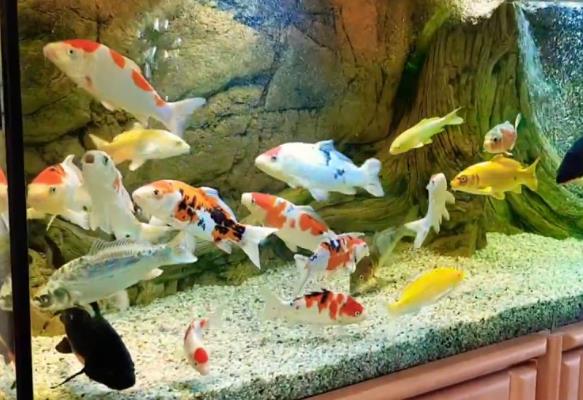Selection and Preparation of Aquariums
Aquarium Specifications: Koi fish are relatively large in size. Therefore, an aquarium with dimensions of 90 cm x 60 cm x 45 cm is generally more suitable.

Planting of Aquatic Plants: Insert a glass plate 10 - 15 cm from the back of the aquarium and fix it within the gravel for planting aquatic plants. Aquatic plants can purify the water quality and enhance the ornamental value.
Water Quality Management
Treatment of Water Sources: Avoid using tap water that contains chlorine or other harmful substances. The water should be aerated in advance or treated with a dechlorinating agent.
Control of Water Temperature: The suitable water temperature for koi fish is generally between 20 - 25 °C. Either too high or too low a temperature will affect their appetite and immunity.
Testing of Water Quality: Regularly test water quality indicators such as pH value, ammonia nitrogen, nitrite, etc., to maintain the balance of water quality.
Selection of Feed and Feeding
Types of Feed: Koi fish are omnivorous. There are specialized koi fish feeds on the market, which are divided into granular, flake, and sinking types, etc.
Feeding Principles: Follow the principle of "feeding small amounts frequently" to avoid water quality deterioration and indigestion of koi fish caused by overfeeding.
Feeding of Live Bait: Feed an appropriate amount of live bait such as bloodworms and water fleas, but pay attention to disinfection treatment.
Disease Prevention and Environmental Arrangement
Environmental Arrangement: Plant an appropriate amount of aquatic plants and place some decorations such as artificial mountains and small bridges in the aquarium or pond to simulate the natural ecological environment.
Disease Prevention: Keep the water quality clean, change the water regularly, feed rationally, and avoid overfishing and scaring the fish.
Daily Care: Regularly clean up the debris and algae in the aquarium or pond to keep the water clear and transparent.
